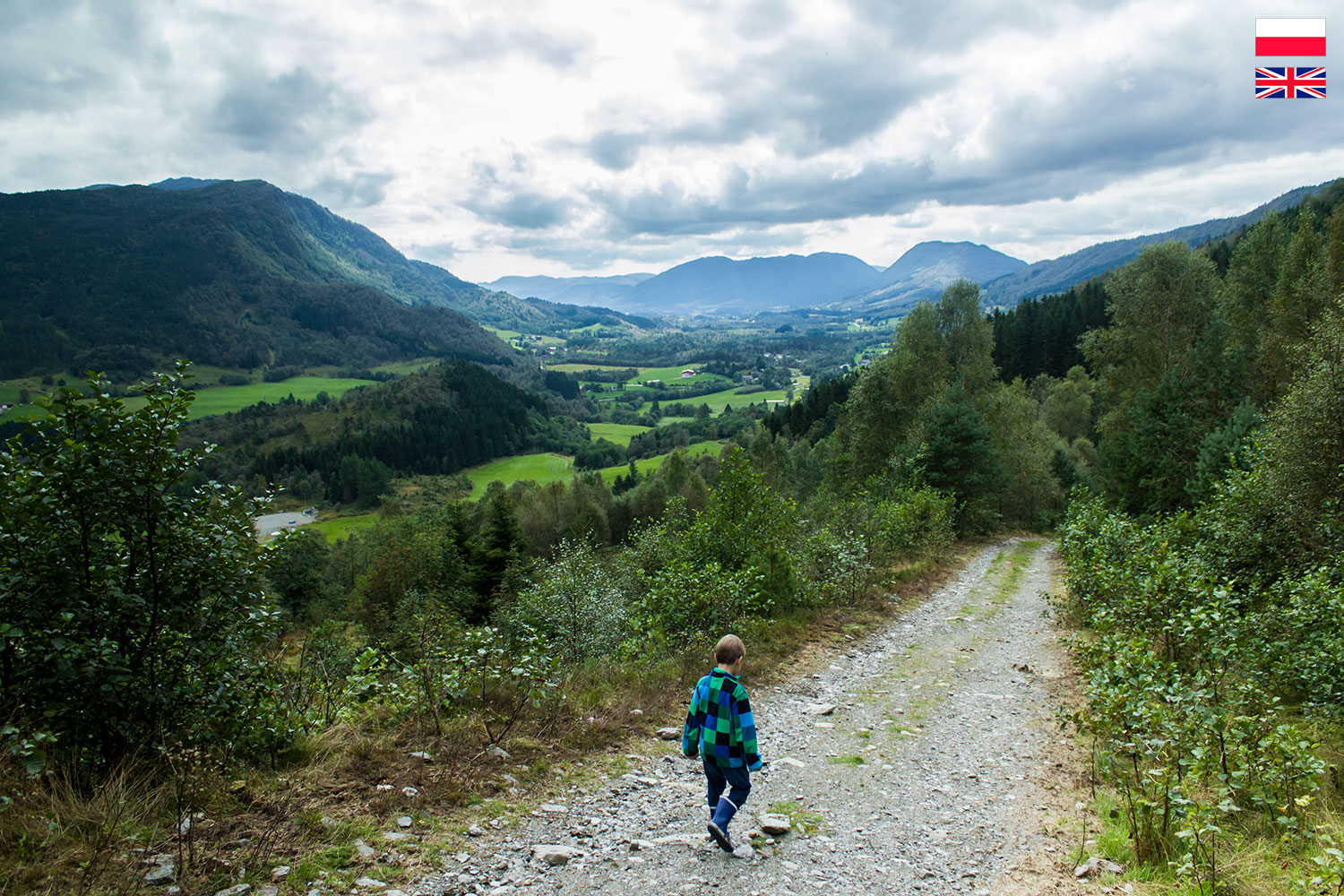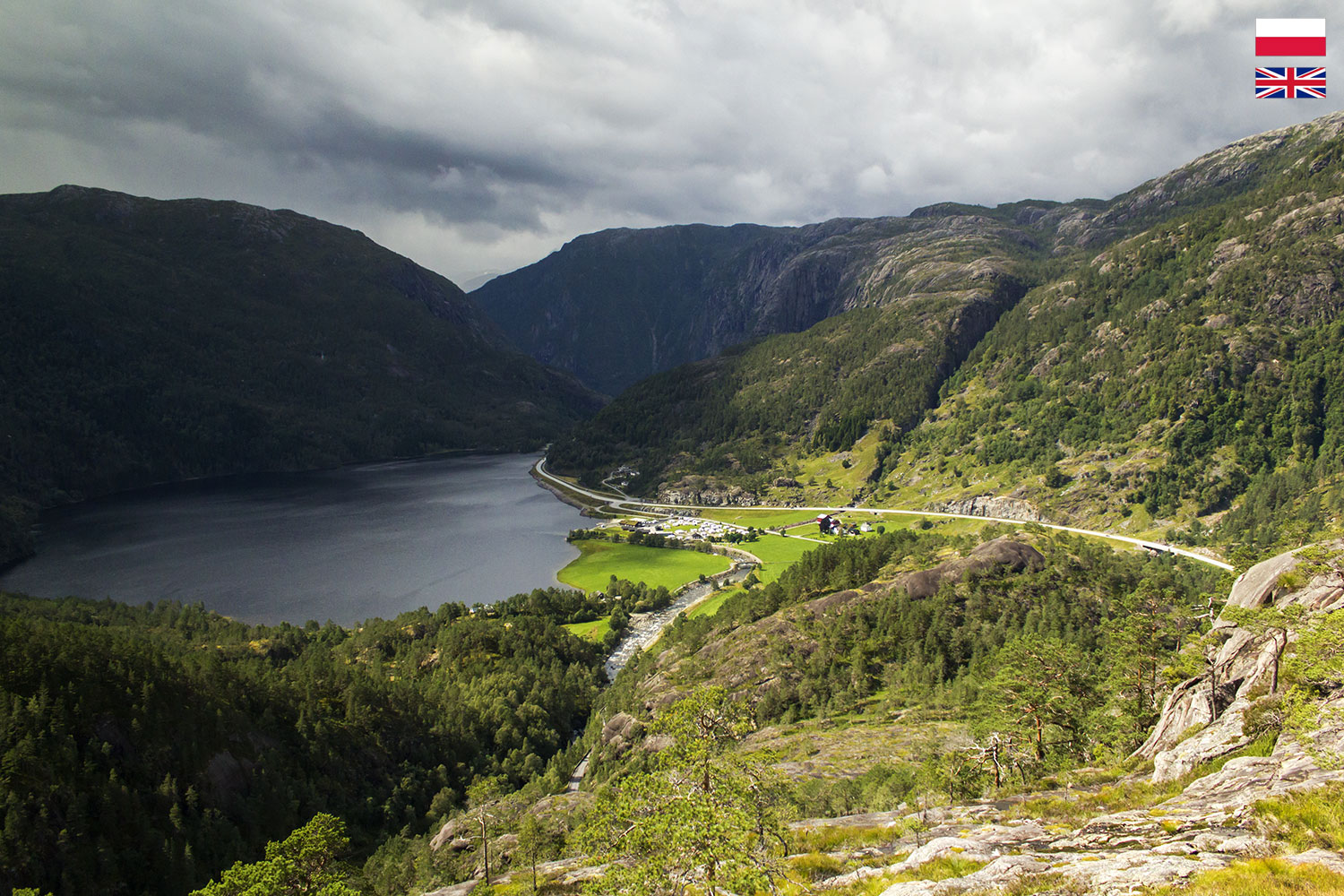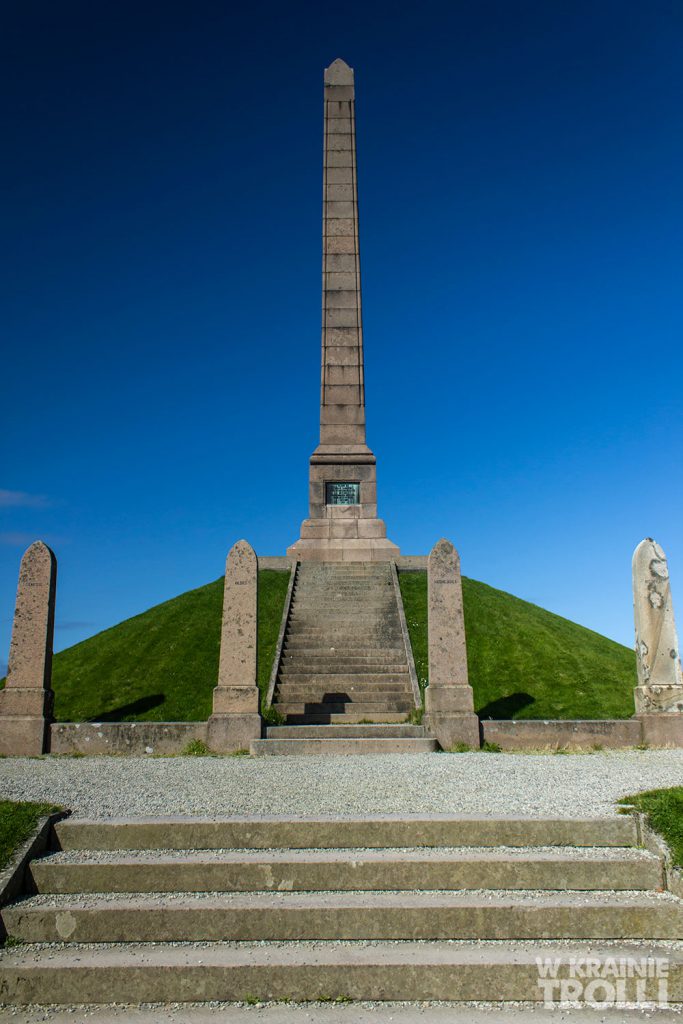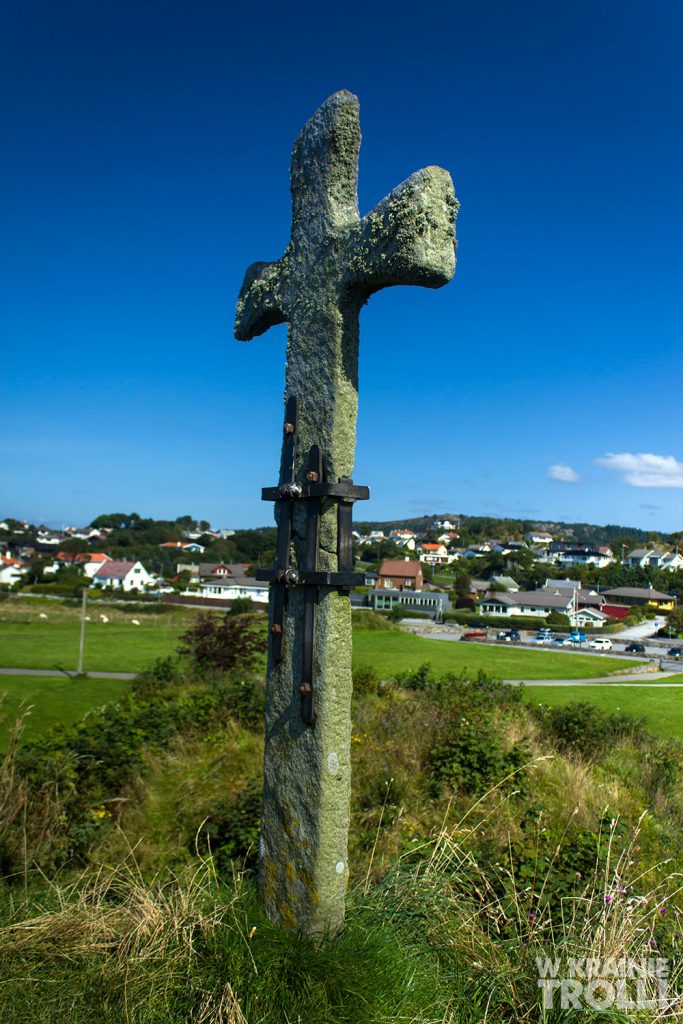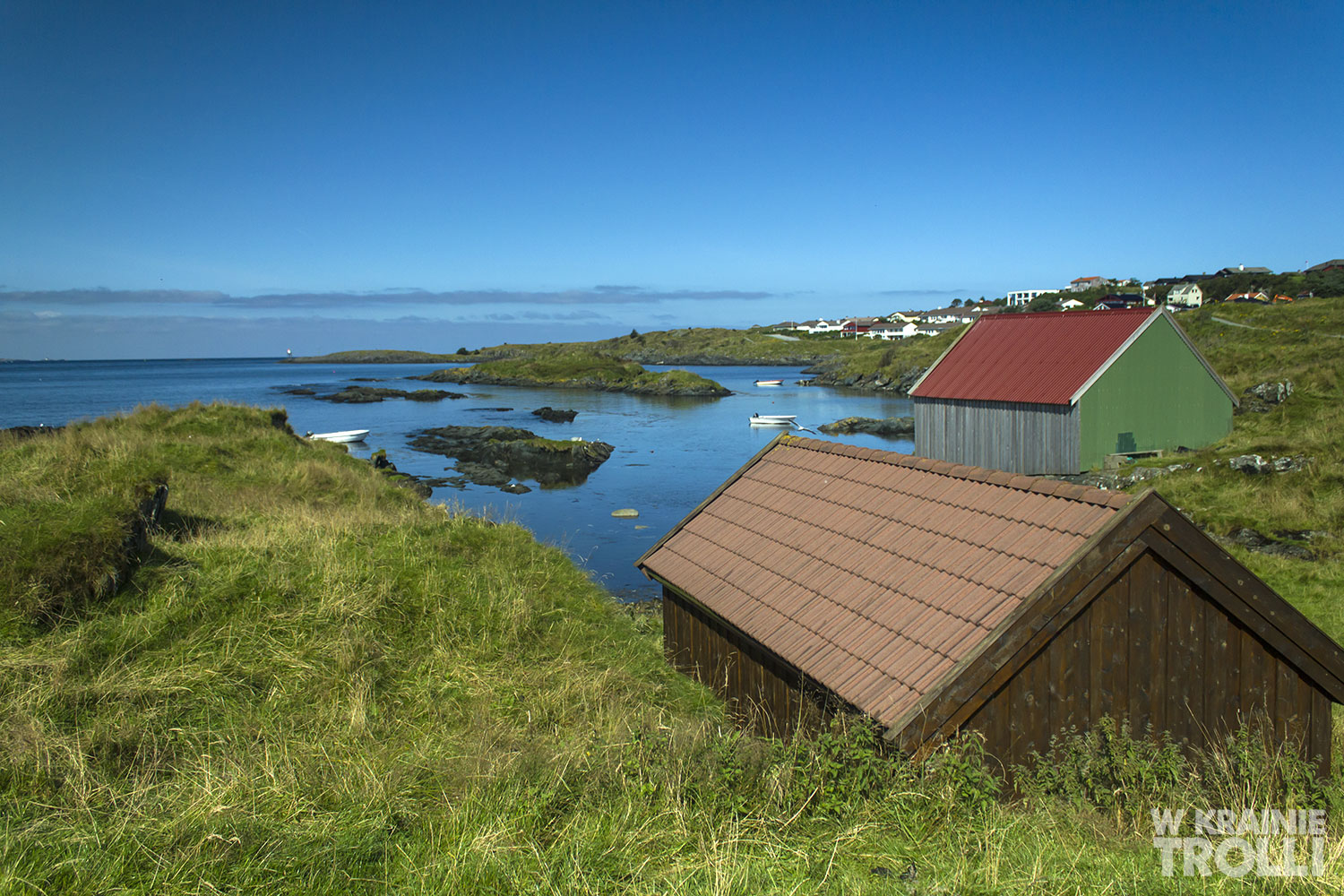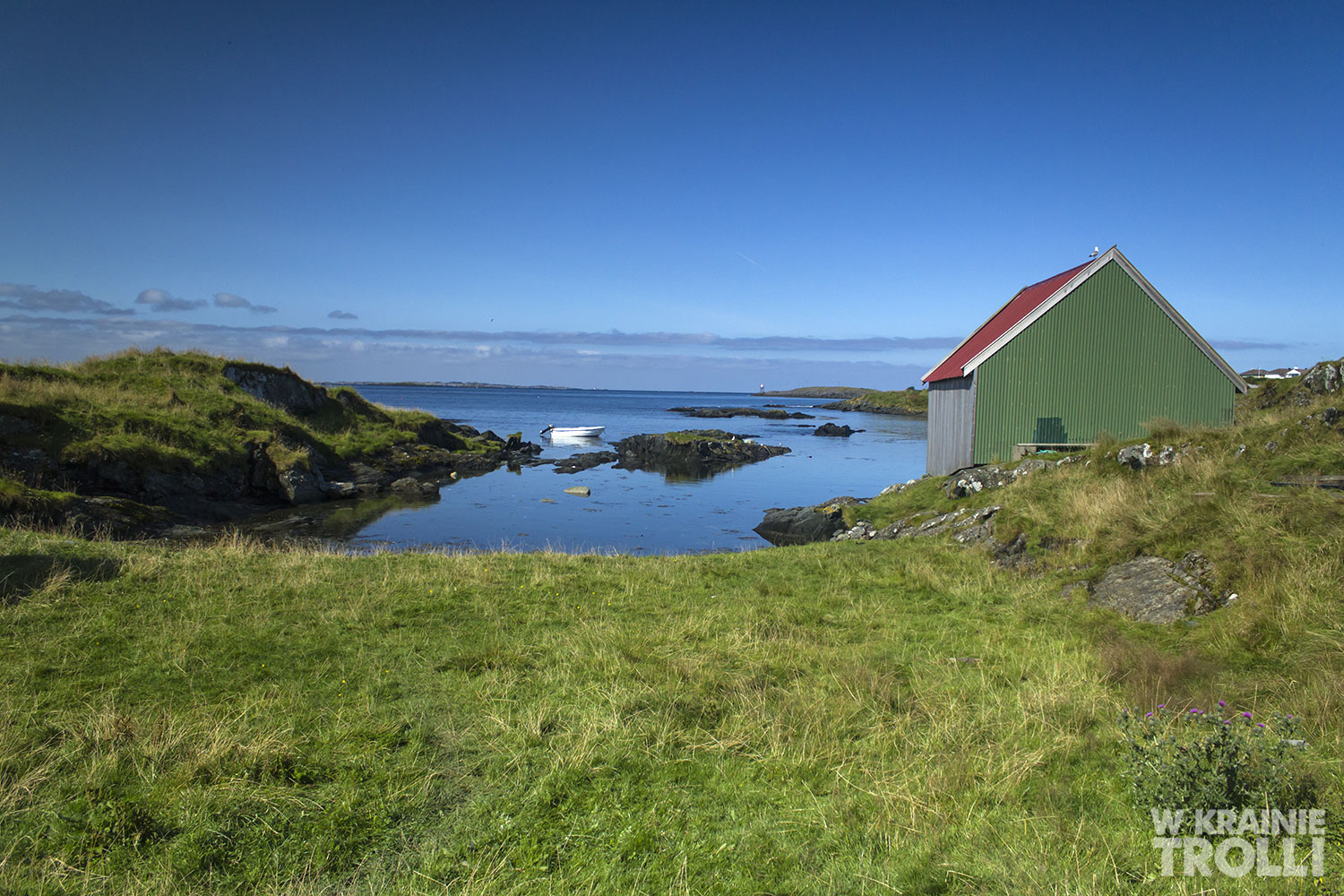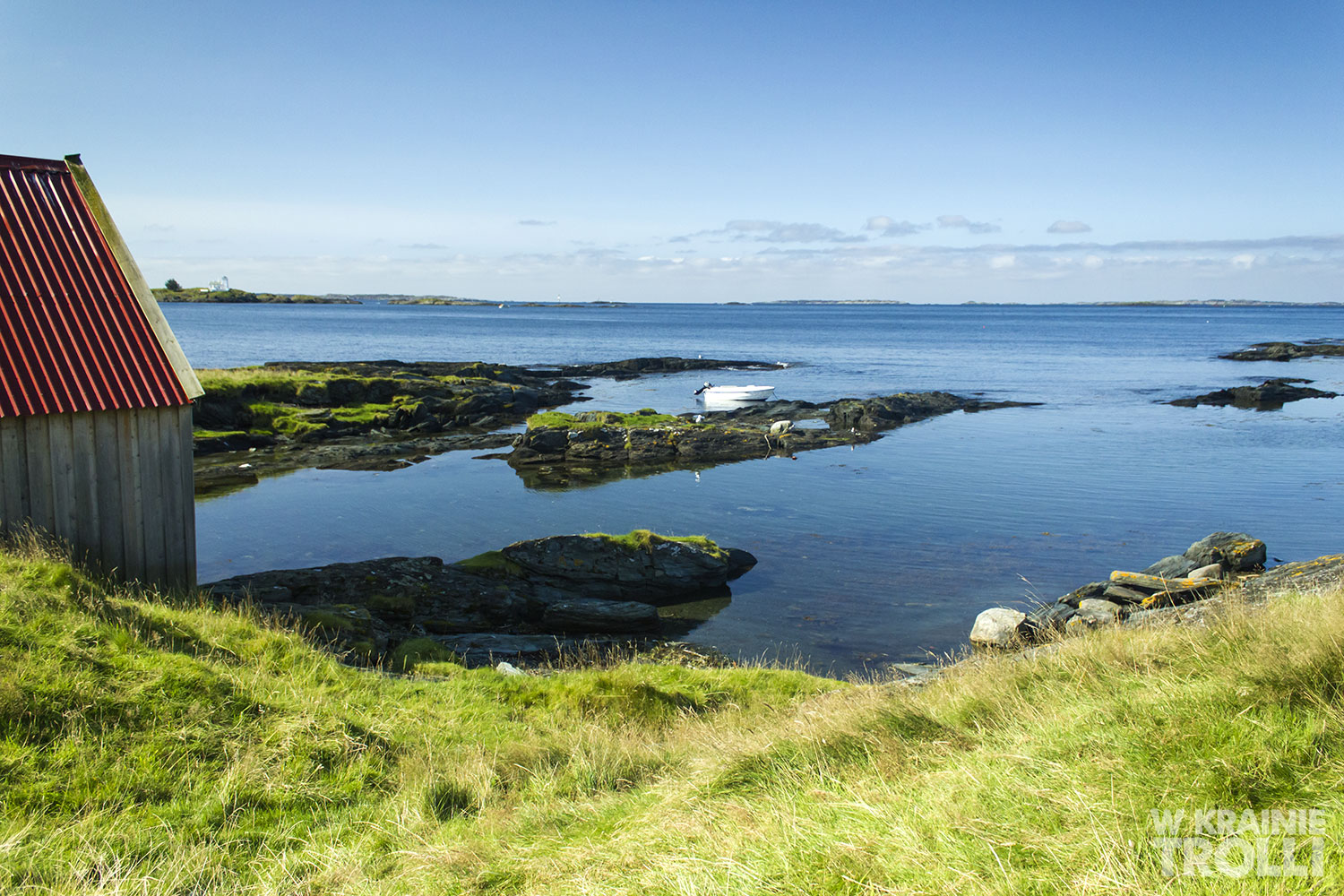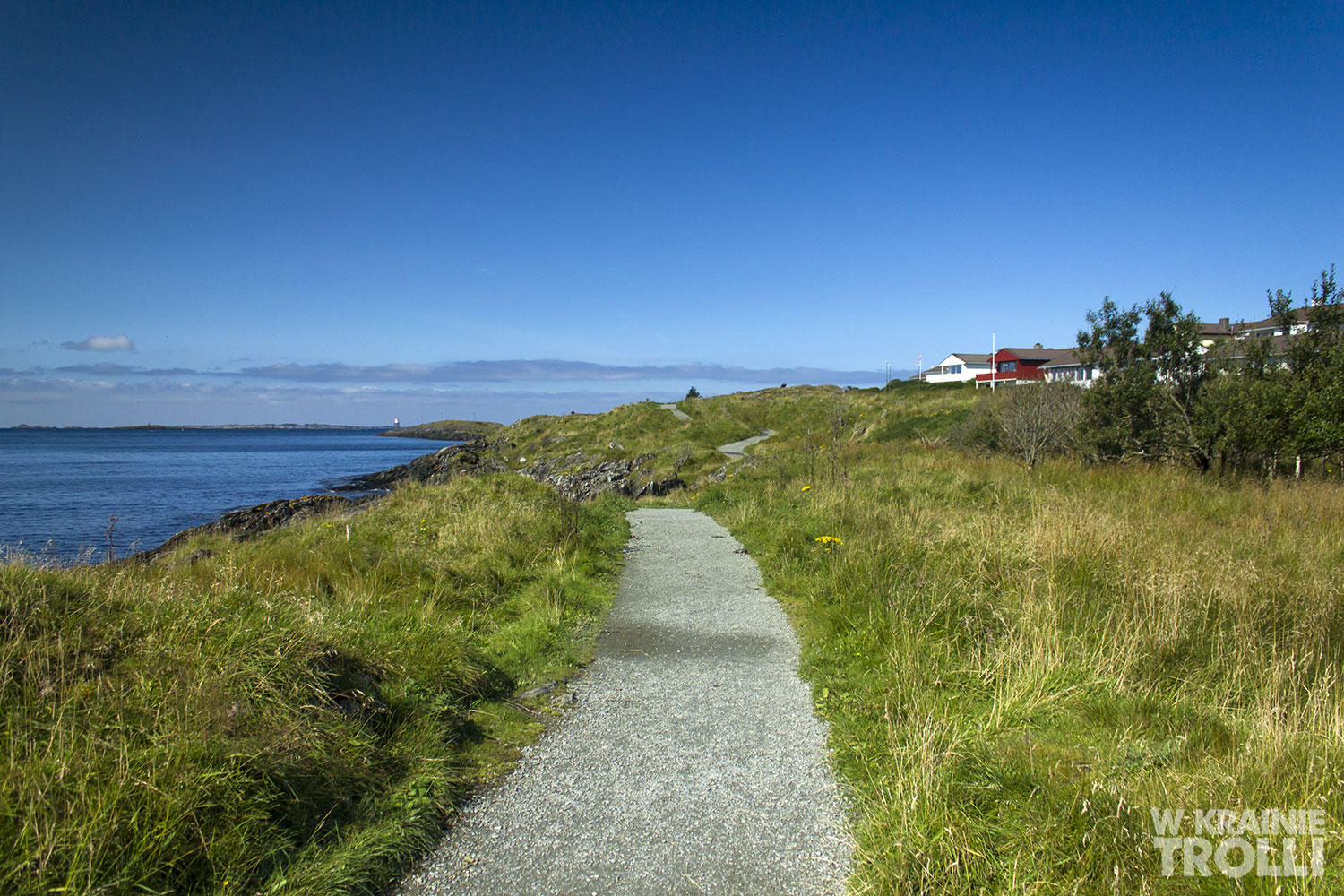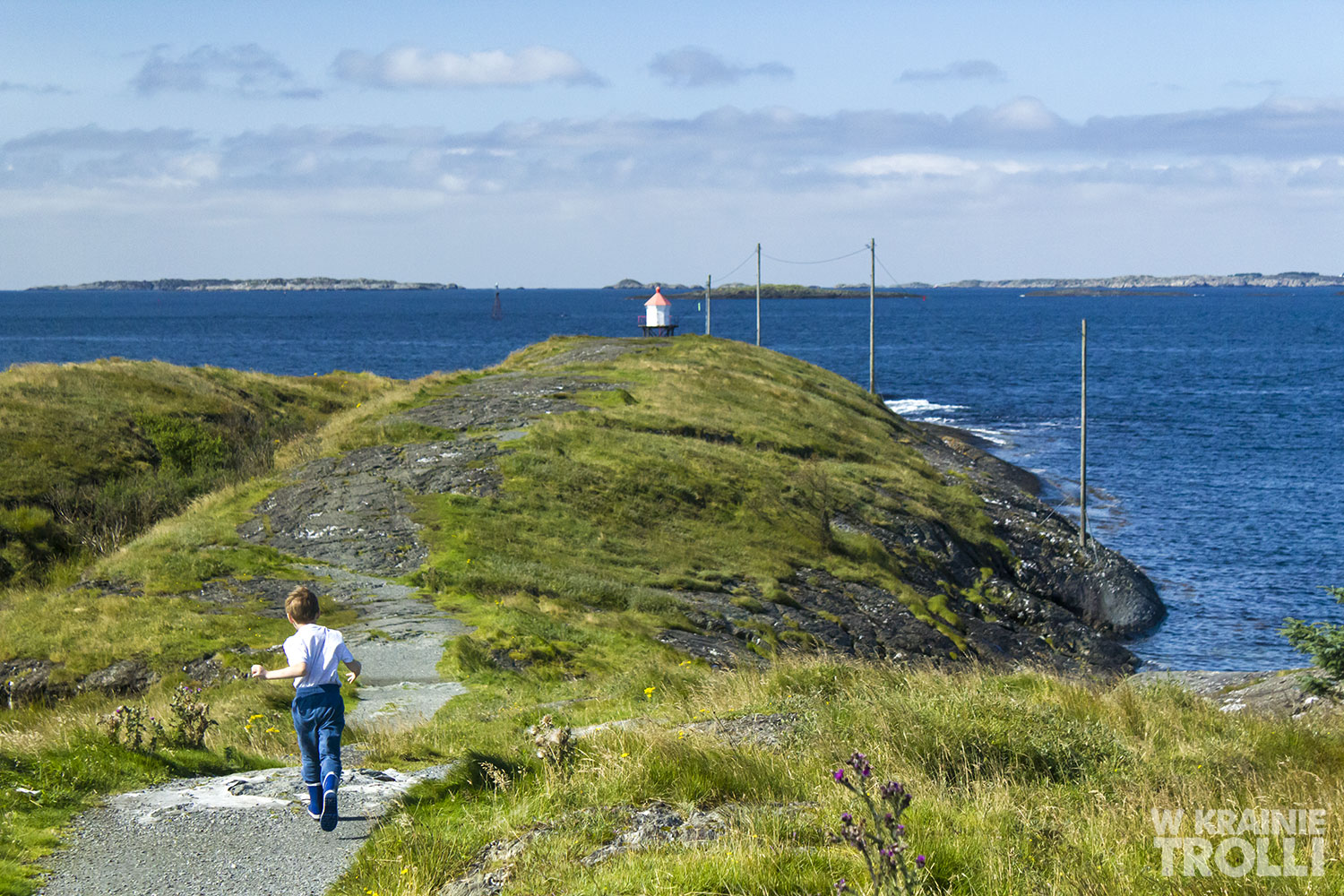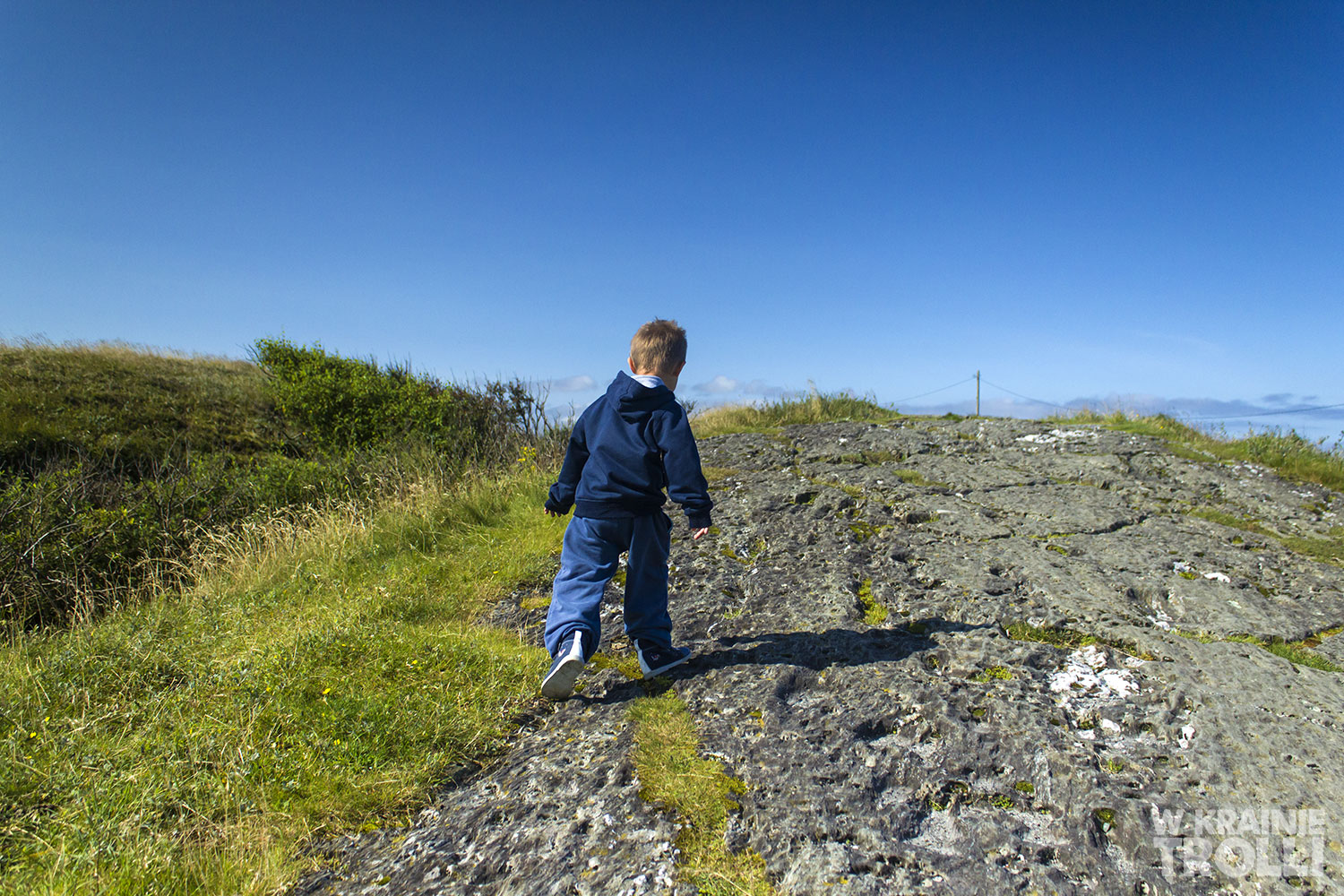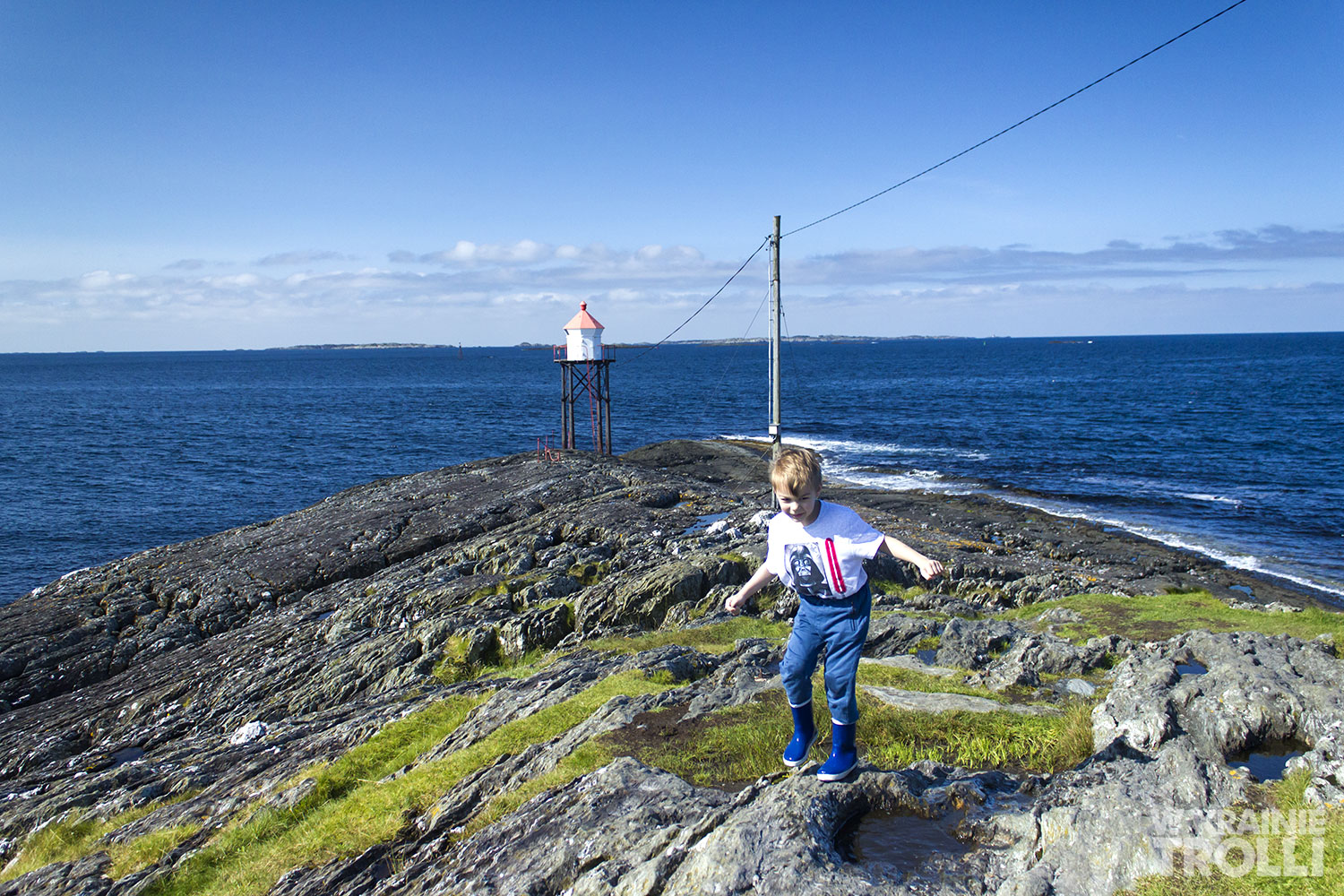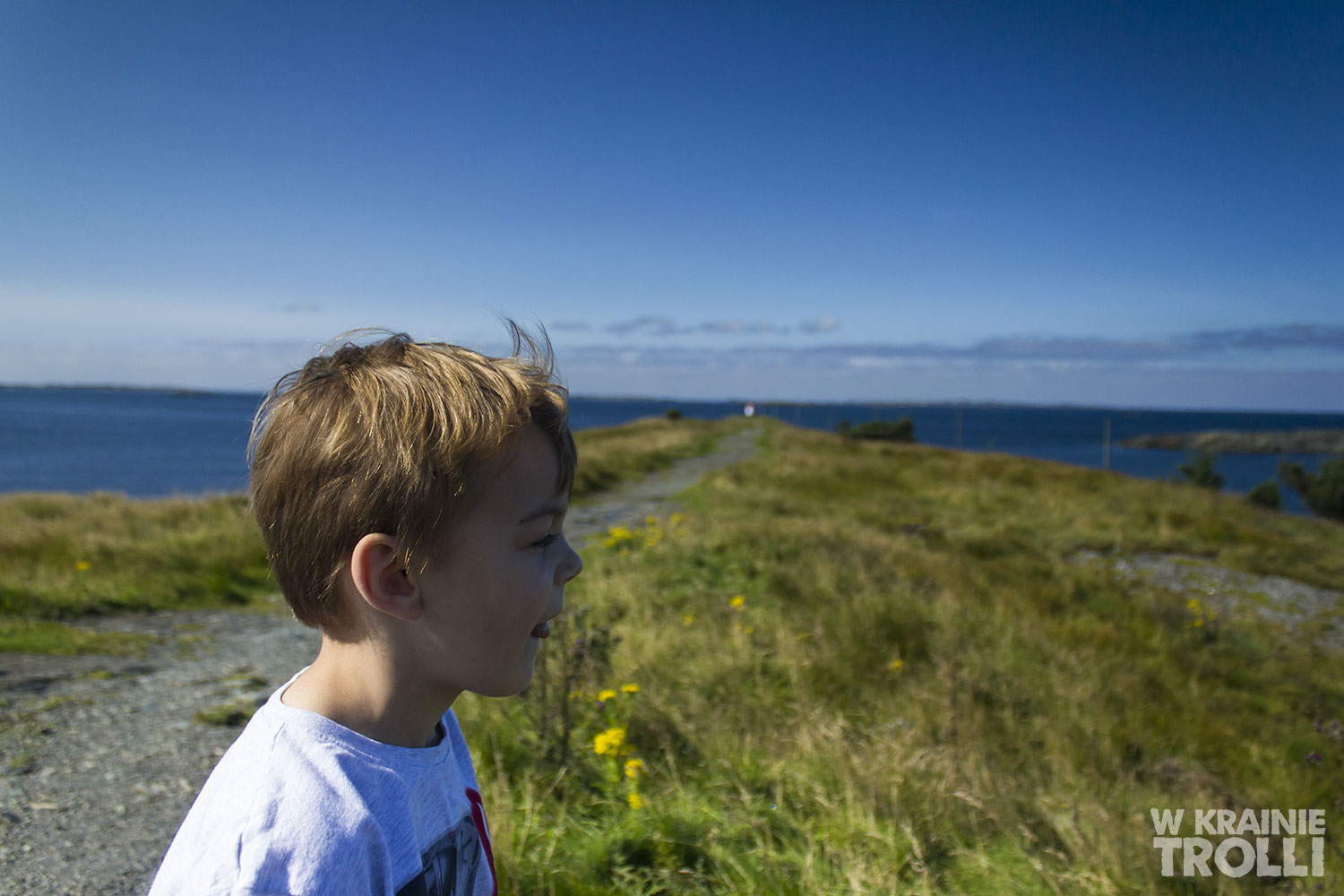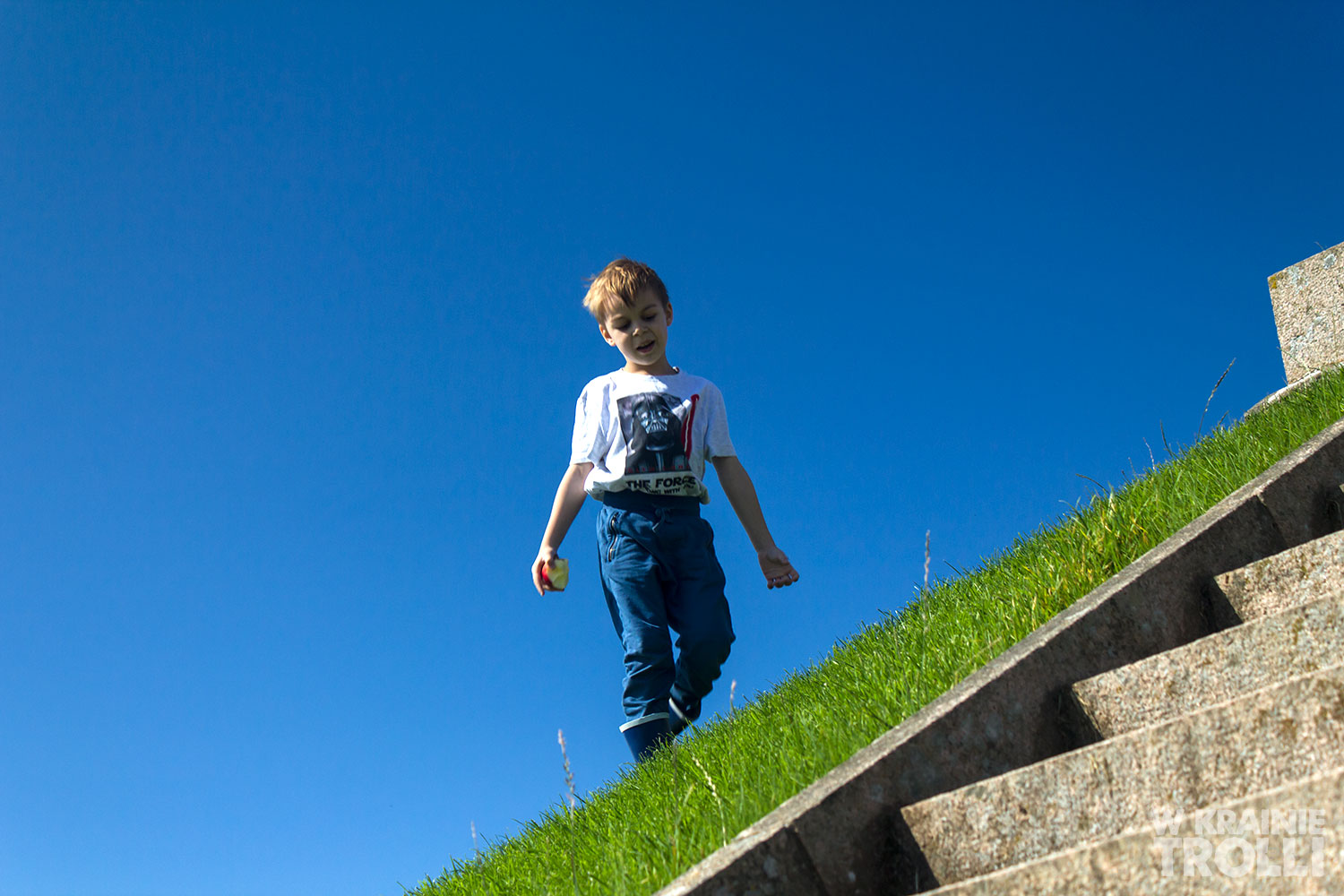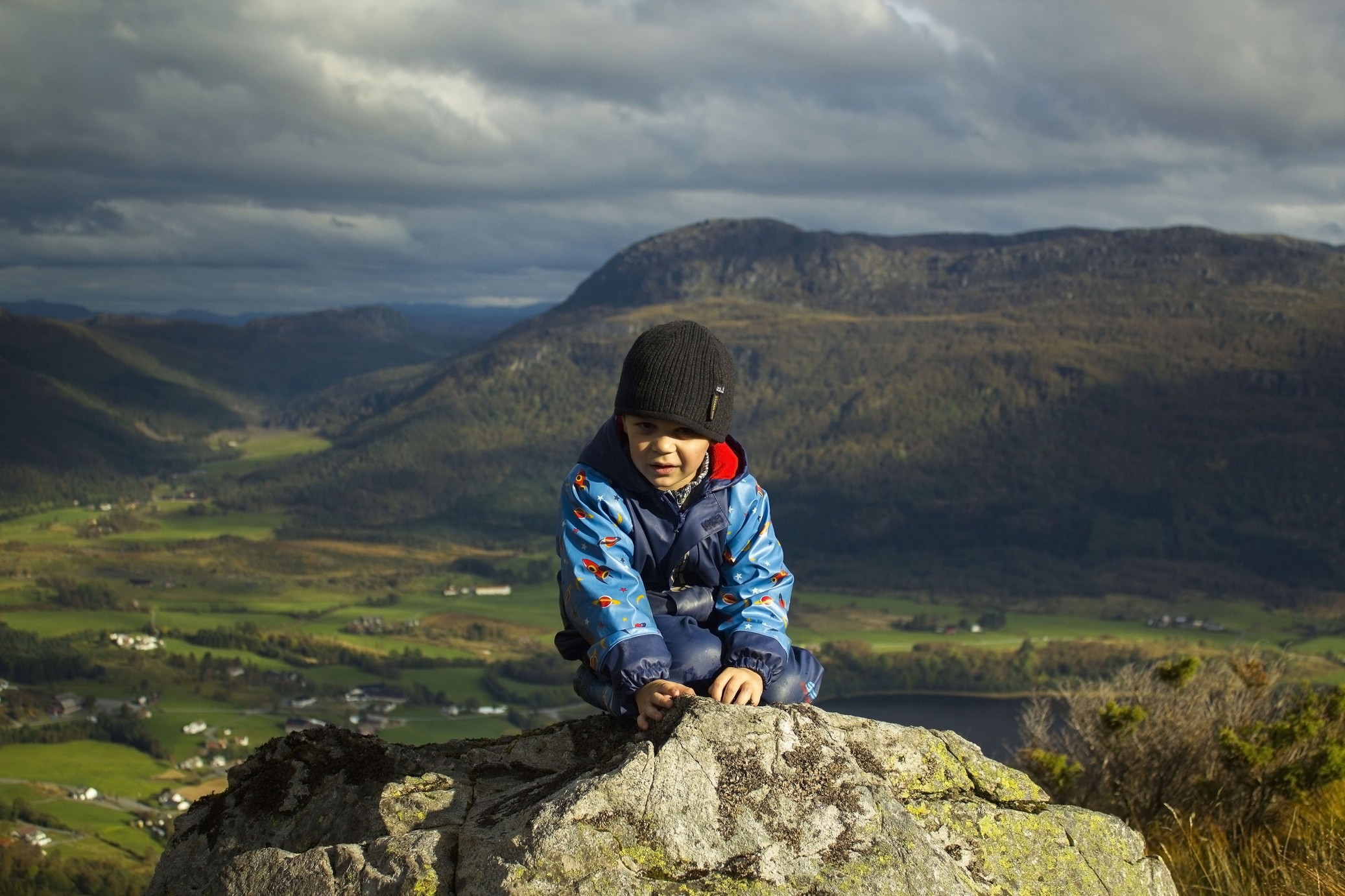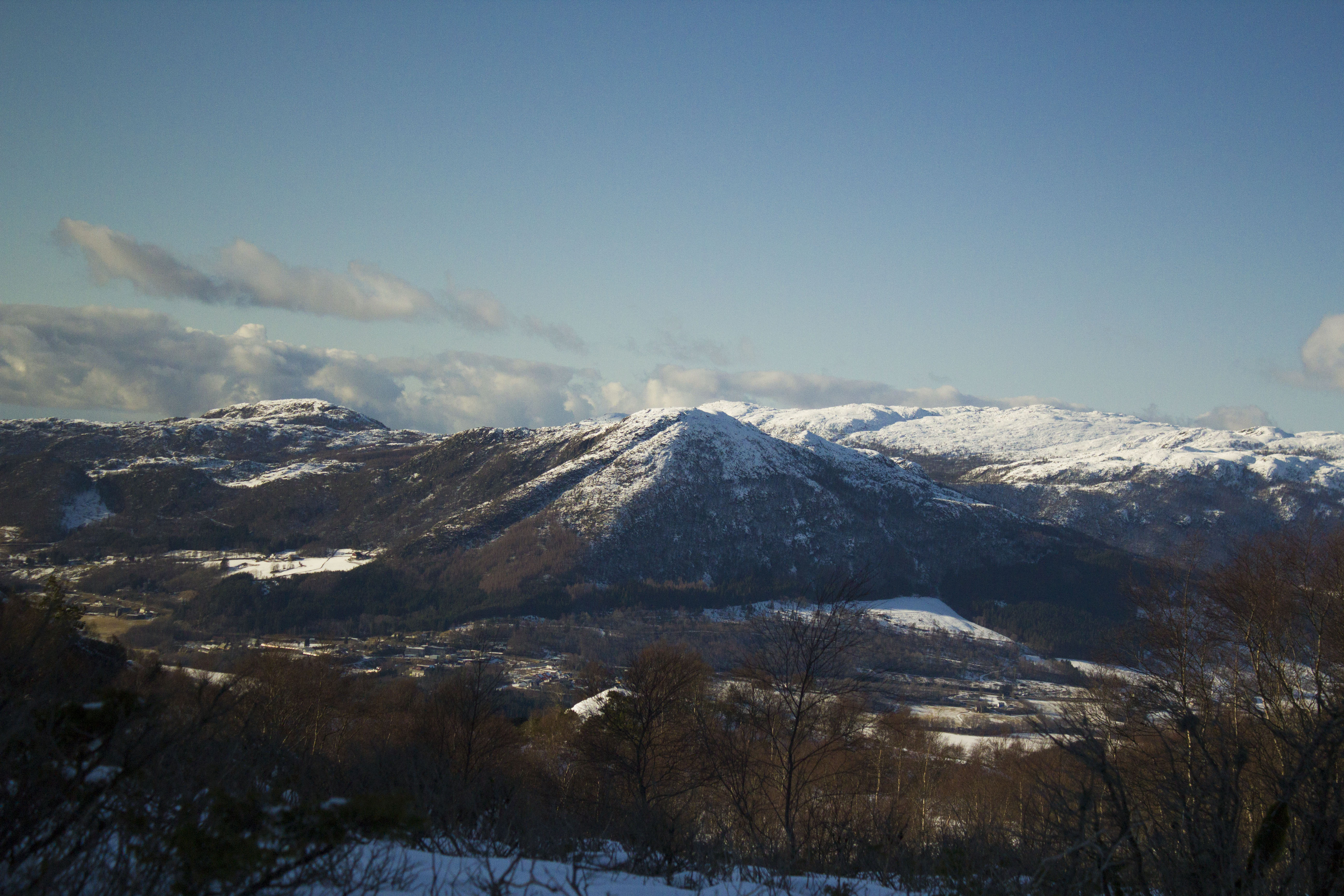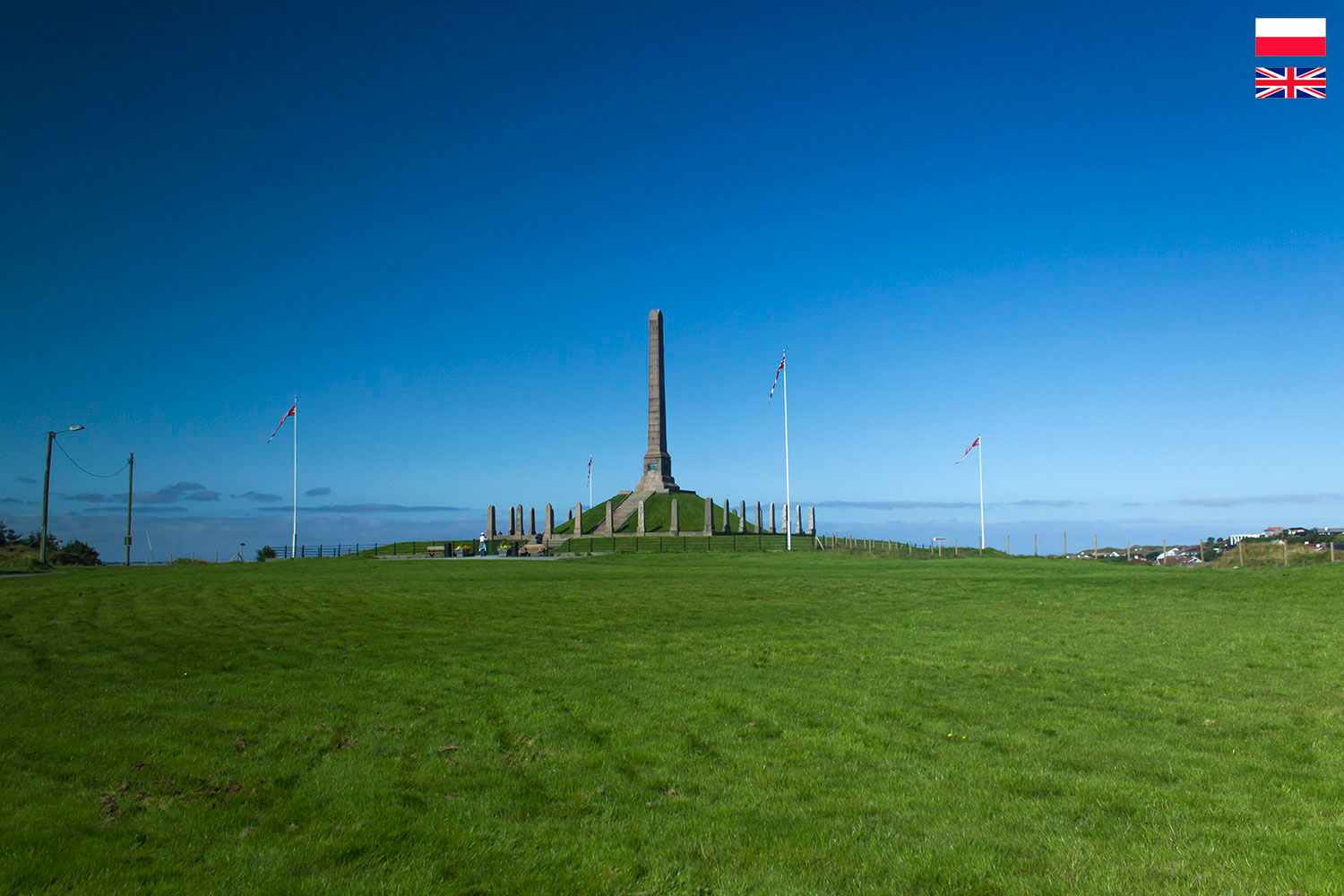
Haraldshaugen, Krosshaugen i spacer do Kvalen Fyr
Haugesund nie należy do najczęściej odwiedzanych miast Norwegii. Pozostaje w tyle za Oslo, Stavanger, Bergen czy Trondheim. Nic też dziwnego, bo miasto nie oferuje zbyt wiele atrakcji podróżnym. Próżno tu szukać urzekającej starówki Bergen czy klimatycznych uliczek Stavanger. Kilka mających miejsce w Haugesund festiwali letnich to chyba zbyt mało, żeby przyciągnąć w ten rejon rzesze turystów. A jednak jest tutaj kilka miejsc wartych odwiedzenia. Jednym z nich jest widoczne z drogi 47, nieco na północ od centrum miasta, Haraldshaugen.
Haugesund is not one of the most visited cities in Norway. It is far away behind Oslo, Stavanger, Bergen or Trondheim. I guess the reason of that is because the city does not offer too many travel attractions. There is no enchanting old town like this one in Bergen or the climatic streets of Stavanger. A few summer festivals in Haugesud are probably not enough to get more visitors. But there are still several places worth visiting. One of them is visible from the road 47, just north of the city center, Haraldshaugen.
Haraldshaugen (Wzgórze Haralda) to monument upamiętniający zwycięstwo króla Haralda Pięknowłosego w bitwie nad wodami Hafrsfjordu w 872r., które pozwoliło zjednoczyć wojujące księstwa w jeden naród. Pomnik powstał dokładnie 1000 lat po tamtych wydarzeniach, 18 lipca 1872r. Na niewielkim kopcu postawiono 17-to metrowy granitowy obelisk. Poniżej, dookoła wzgórza stoi 29 znacznie mniejszych obelisków, które mają symbolizować ówczesne norweskie księstwa.
Haraldshaugen (Harald’s Mound) is a monument commemorating King Harald’s Fairhaired victory in the Battle of Hafrsfjord in 872, which helped consolidated Norway into one kingdom. The monument was created exactly 1000 years after those events, 18 July 1872. A 17-meter granite obelisk was erected on a mound. Below, there are 29 smaller obelisks around the hill, which symbolizing old norwegian counties.

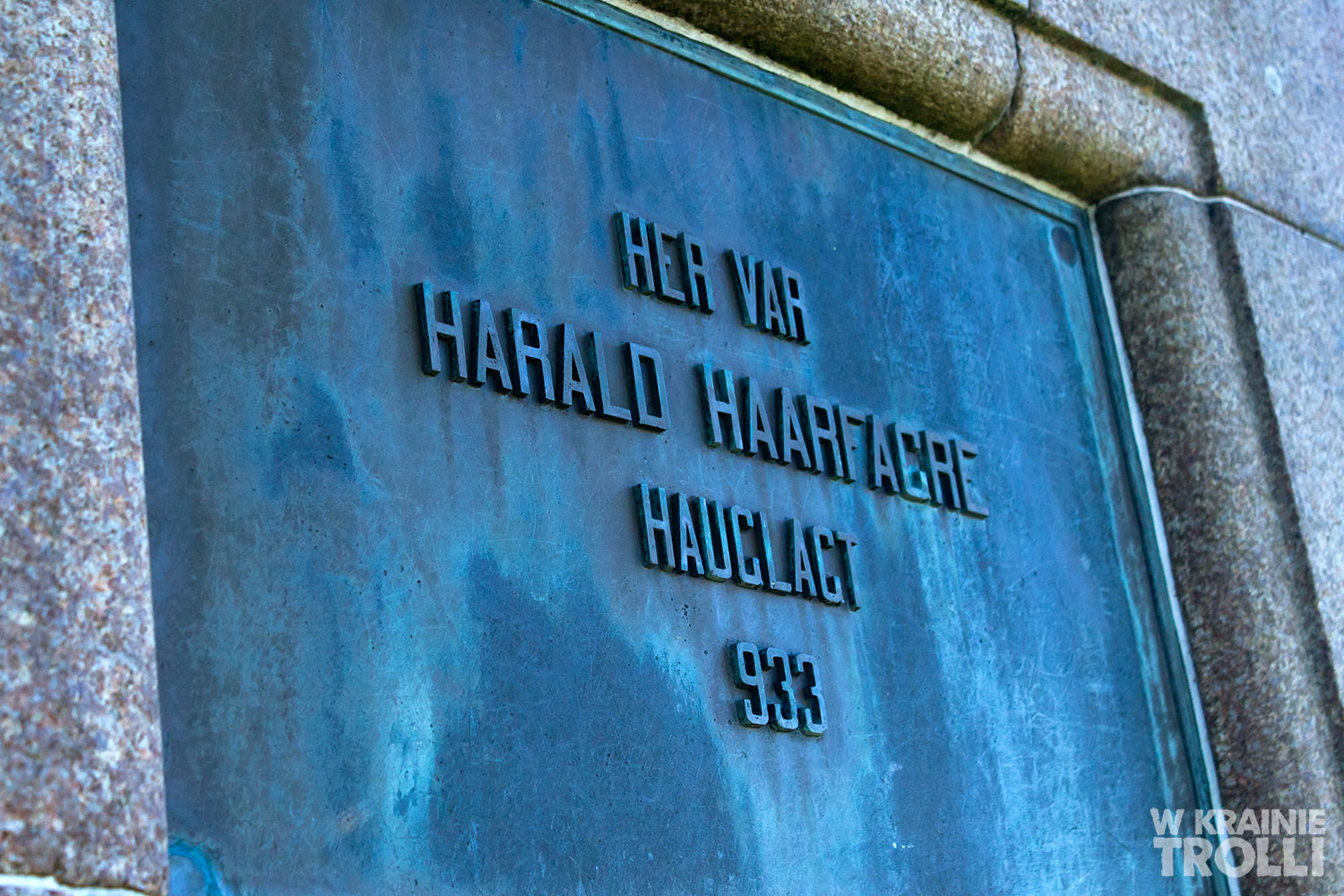 Ktoś mógłby zapytać, dlaczego ów monument stoi właśnie w Haugesund, skoro bitwa nad Hafrsfjord rozegrała się niedaleko Stavanger, a miejsce bitwy upamiętniają tam trzy wysokie, kamienne miecze wbite w skałę nad brzegami fiordu (Sverd i fjellet). Odpowiedź kryje się w sadze Snorre Sturlasona, który opisuje śmierć Haralda w Hauge (Haugesund). Co prawda, szczątków Haralda Pięknowłosego nigdy nie odnaleziono, jednak w XIX wieku wciąż wierzono, że został on pochowany pod kamienną płytą nagrobną na wzgórzu.
Ktoś mógłby zapytać, dlaczego ów monument stoi właśnie w Haugesund, skoro bitwa nad Hafrsfjord rozegrała się niedaleko Stavanger, a miejsce bitwy upamiętniają tam trzy wysokie, kamienne miecze wbite w skałę nad brzegami fiordu (Sverd i fjellet). Odpowiedź kryje się w sadze Snorre Sturlasona, który opisuje śmierć Haralda w Hauge (Haugesund). Co prawda, szczątków Haralda Pięknowłosego nigdy nie odnaleziono, jednak w XIX wieku wciąż wierzono, że został on pochowany pod kamienną płytą nagrobną na wzgórzu.
Someone might ask why this monument is located in Haugesund, since the Hafrsfjord battle was near Stavanger, and the battle site is commemorated there by three high stone swords stuck in the rock on the banks of the fjord (Sverd and fjellet). The answer lies in Snorre Sturlallon’s saga, that describes Harald’s death in Hauge (Haugesund). In fact the remains of Harald Fairhaired have never been found, but in the nineteenth century they were believed that he was buried under a stone gravestone on a hill.
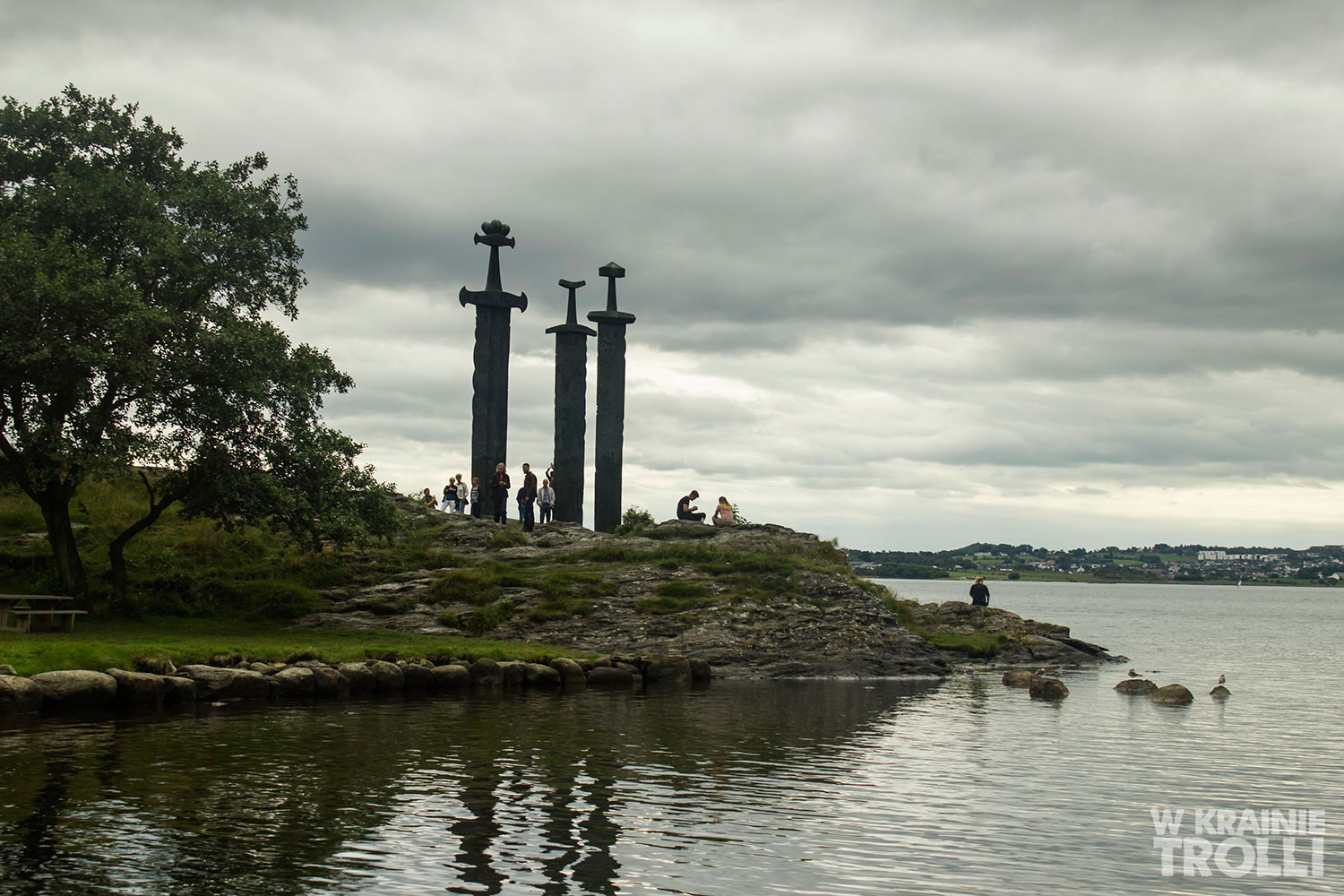
 Na sąsiednim wzgórzu widoczny jest niemal trzy metrowy kamienny krzyż, a sam pagórek nosi nazwę Krosshaugen. Ów krzyż to zachowany do naszych czasów dowód na silne wpływy chrześcijaństwa w tym rejonie w X wieku. Zimą 1846-47 krzyż uległ zniszczeniu, dlatego obecnie możemy go podziwiać wraz ze spinającymi go w całość żelaznymi klamrami.
Na sąsiednim wzgórzu widoczny jest niemal trzy metrowy kamienny krzyż, a sam pagórek nosi nazwę Krosshaugen. Ów krzyż to zachowany do naszych czasów dowód na silne wpływy chrześcijaństwa w tym rejonie w X wieku. Zimą 1846-47 krzyż uległ zniszczeniu, dlatego obecnie możemy go podziwiać wraz ze spinającymi go w całość żelaznymi klamrami.
On neighboring hill, there is an almost three meters high stone cross, and the hill itself is called Krosshaugen. This cross is a proof of the strong influence of Christianity in this area in the tenth century. In the winter of 1846-47 the cross was destroyed, so today two broken parts are joined by the iron clamps.
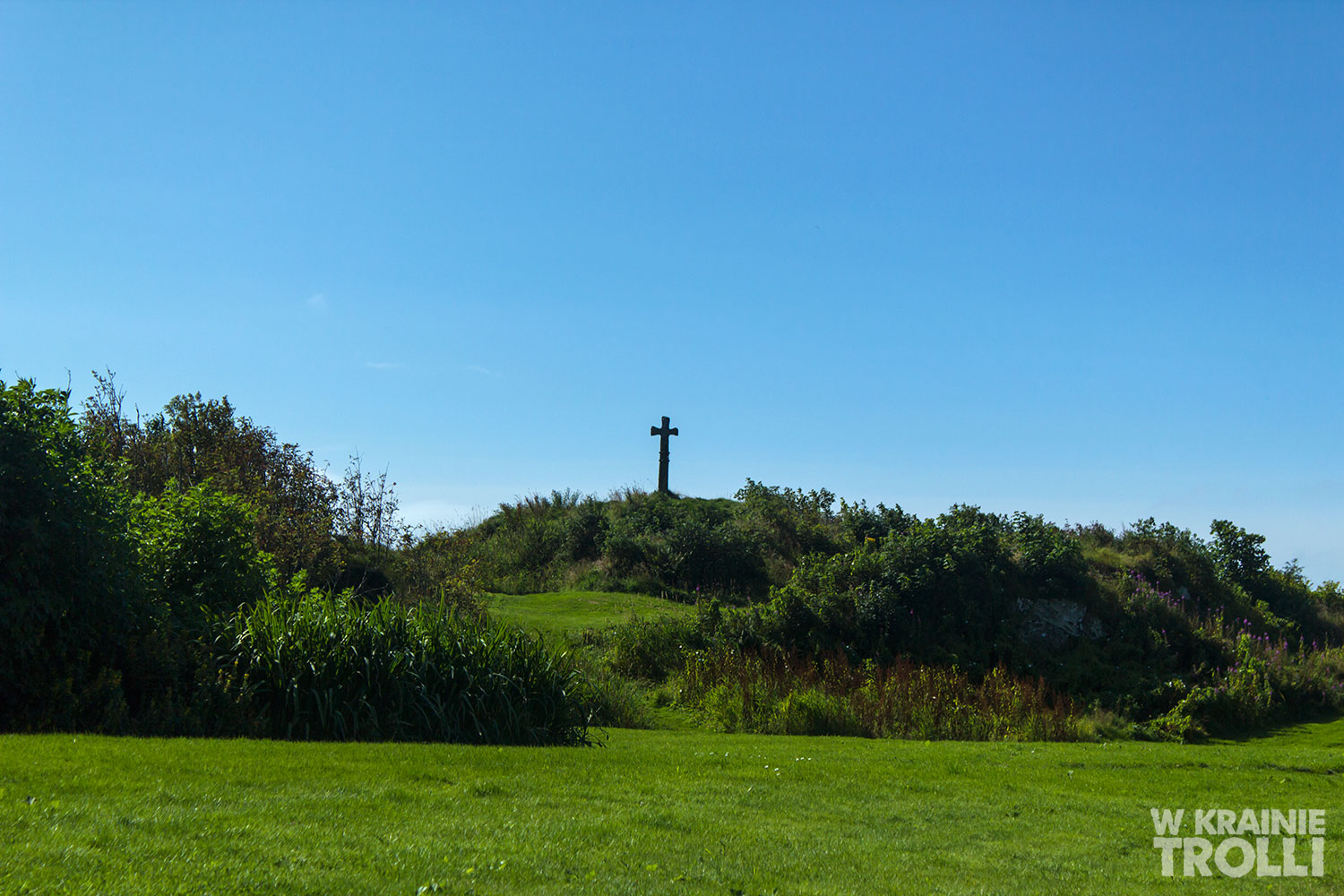
Zarówno na Haraldshaugen jak i na Krosshaugen, bywaliśmy w przeszłości wielokrotnie, tak więc oba punkty pozostawiliśmy sobie na deser. Główną atrakcją tego dnia były ścieżki biegnące wzdłuż wybrzeża. Jeden ze szlaków, liczący zaledwie 1,5 kilometra i prowadzący do widocznej ze Wzgórza Haralda latarni morskiej okazał się trasą w sam raz na krótki rodzinny spacer. Szlak zaczyna się bezpośrednio przy monumencie a do wyboru jest jeszcze ponad 5 kilometrowa pętla wokół dzielnicy Kvala.
We visited Haraldshaugen and Krosshaugen many times in the past, so we left them for the dessert. The main attraction of this day were the paths along the coast. One of the trails, just 1.5 kilometers route, leading to the lighthouse visible from the mound, seems to be just perfect for a short family walk. The trail starts directly at the monument site. There is also an alternative route, 5 km long loop around Kvala.
Teren ogrodzony jest płotem i bramkami, przy których widnieje informacja, aby nie dokarmiać owiec. Rzeczywiście w okolicy można spotkać wiele tych zwierząt pasących się na pasie zieleni pomiędzy morzem a zabudowaniami. Ścieżkę poprowadzono wzdłuż wybrzeża właśnie poprzez pastwiska owiec, wobec czego należy uważnie stawiać stopy. Ostatni odcinek trasy przebiega na wysuniętym w morze cyplu a żwirowaną ścieżkę często zastępuje goła skała nosząca ślady erozji.
The walking area is a fenced with gates and there is information to not feed the sheep. Indeed, in this place you can meet many of these animals, which feed on the green belt between the sea and the buildings. The path is leading along the coast just in the middle of the sheep pastures, so you should carefully set your feet. The last part of the route runs on the peninsula, where the gravel path is often replaces by bare rock with signs of erosion.
Tym razem zabraliśmy wózek dla najmłodszego członka rodziny oraz duże nosidło dla Michasia. Tymek tradycyjnie biegał pomiędzy rodzicami, od czasu do czasu przystając nad jakąś kałużą lub szczątkami kraba. W pobliżu latarni zrobiliśmy krótką przerwę dając się wypasać Miśkowi, jednak ze względu na ukształtowanie terenu i jego skłonności do wchodzenia w najmniej pożądane miejsca, popas nie trwał długo. Wróciliśmy pod Haraldshaugen ulicą, biegnącą równolegle do ścieżki, tuż przy pierwszych zabudowaniach.
This time we took a stroller for the youngest member of the family and a big carrier for Michael. Tymek traditionally has been running between his parents, occasionally pausing over a puddle or crab’s remains. In the neighborhood of the lighthouse we made a short break. I released Michael, but due to the shape of the terrain and his habits to go into the least desirable places, break did not last long. We came back to the Haraldshaugen by the street, running parallel to the path, right at the first buildings.


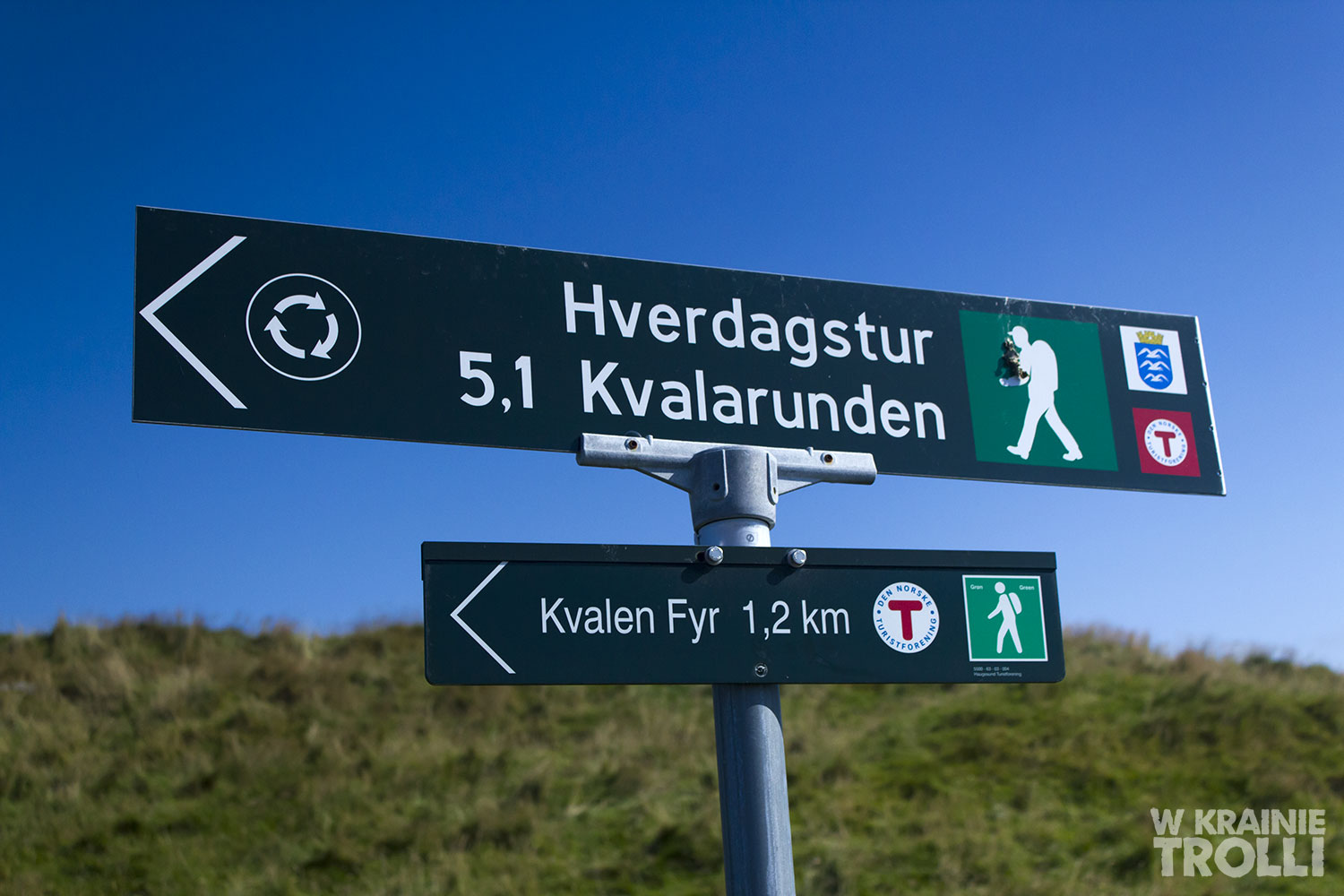

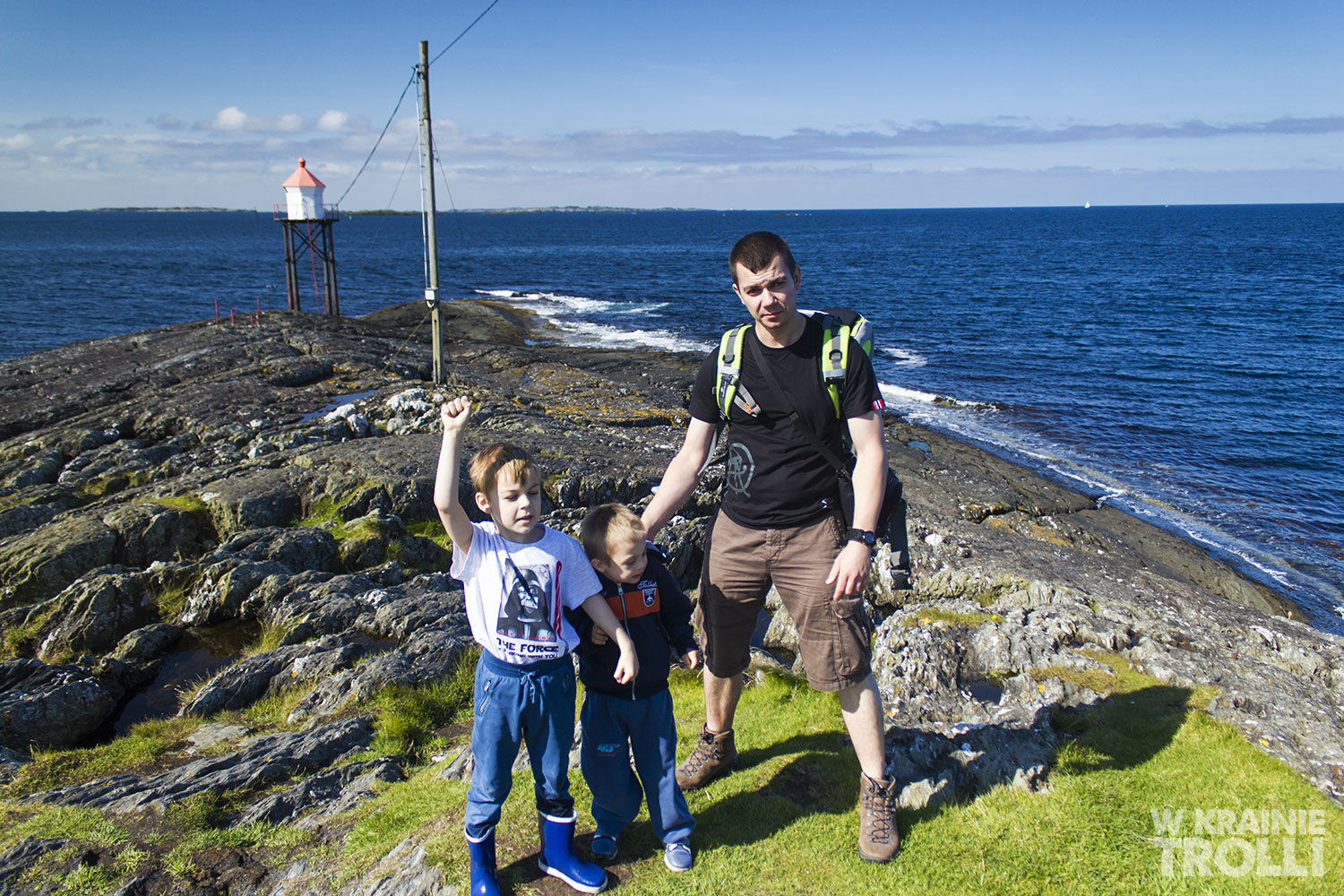
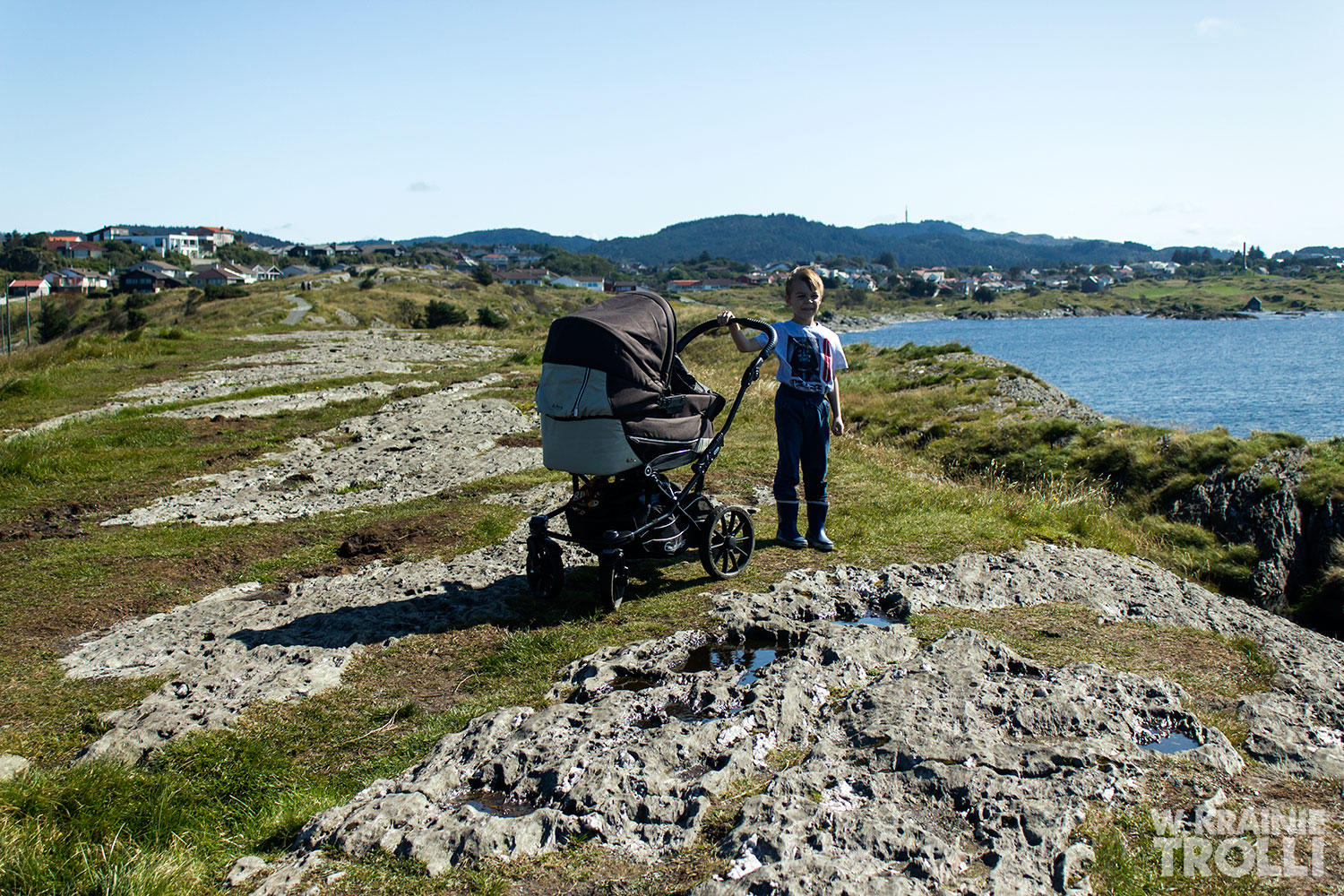

Kolejną przerwę na małe co nieco zrobiliśmy na parkingu, po czym wraz ze starszymi trollami udałem się najpierw na Krosshaugen, a następnie na zdobycie samego Haraldshaugen.
Another break we did at the parking lot. After that I took my older trolls and we went to Krosshaugen and Haraldshaugen.

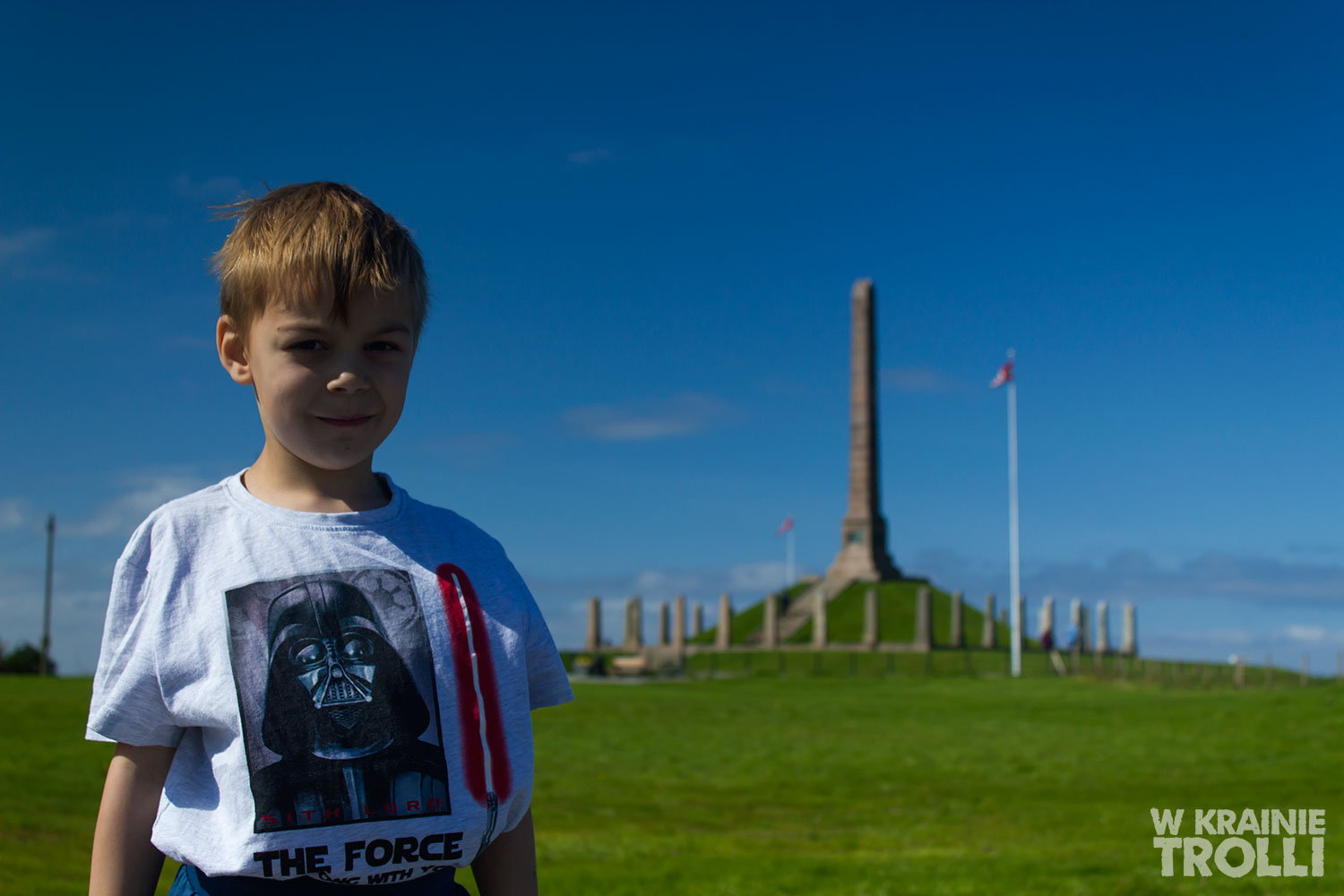

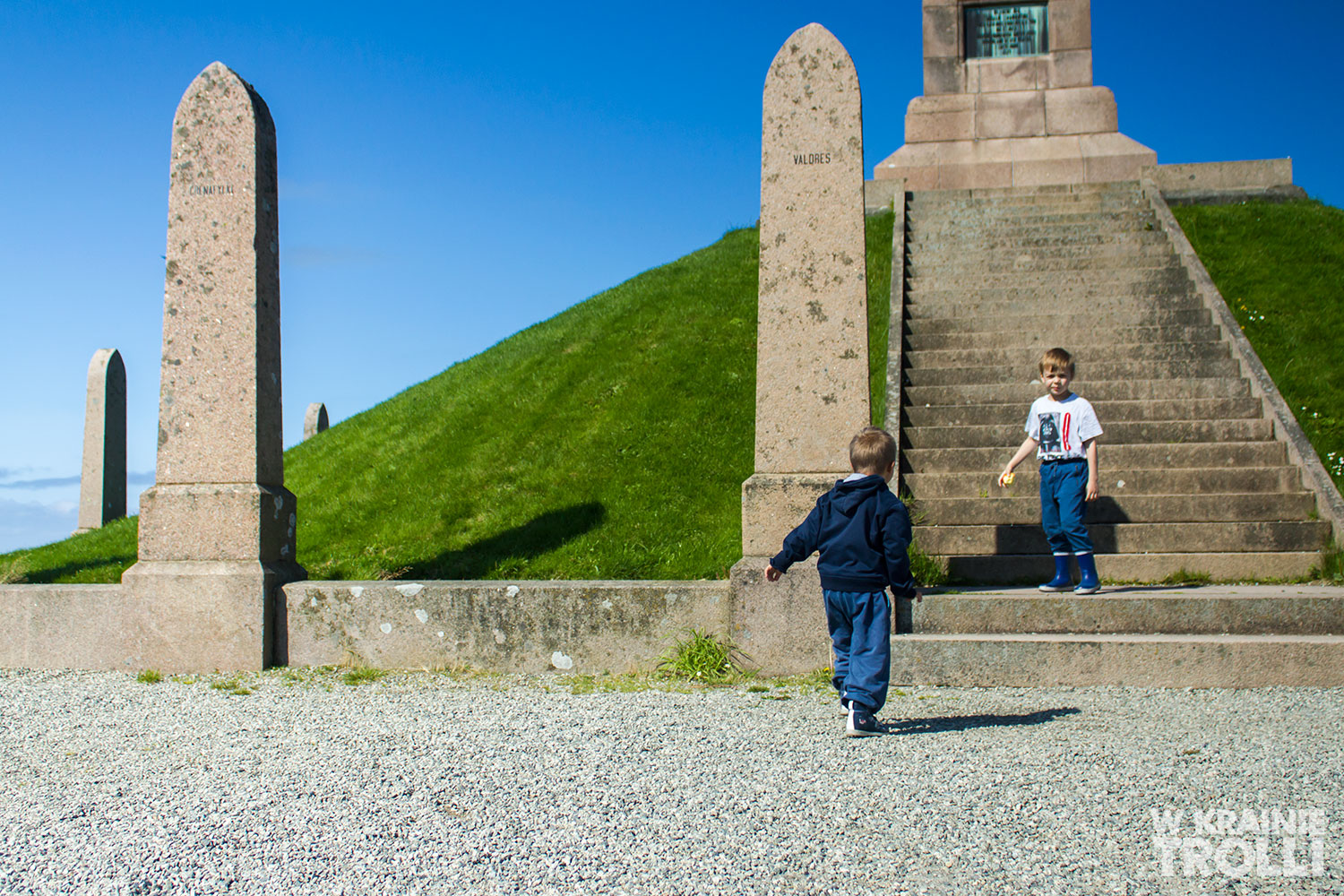 Planujących wypad w te rejony podróżnych może zainteresować fakt, że dosłownie za Krosshaugen znajduje się plac kempingowy (Haraldshaugen Camping), a około dwie minuty marszu dalej można zaopatrzyć się w niezbędne produkty spożywcze w centrum handlowym Gard Senter.
Planujących wypad w te rejony podróżnych może zainteresować fakt, że dosłownie za Krosshaugen znajduje się plac kempingowy (Haraldshaugen Camping), a około dwie minuty marszu dalej można zaopatrzyć się w niezbędne produkty spożywcze w centrum handlowym Gard Senter.
Those who planning to visit this place may be interested in the fact that behind Krosshaugen there is a camping site (Haraldshaugen Camping), and about two minutes walk from there you can find grocery store in the shopping center (Gard Senter).
